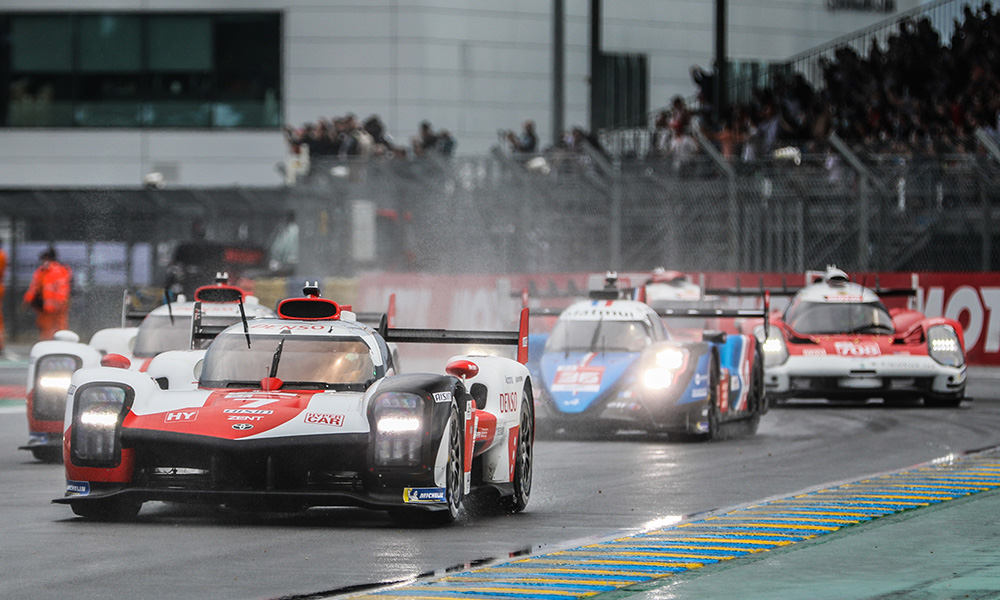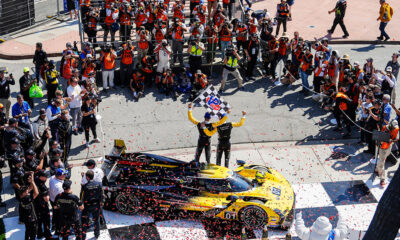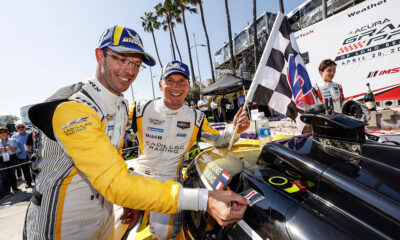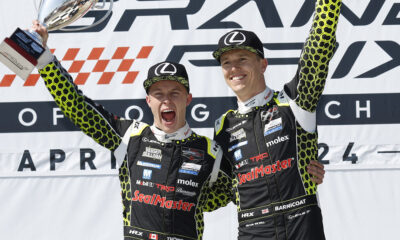
Photo: MPS Agency
Manufacturers must play with an “open book” in order for the Balance of Performance between LMDh and the various specification of Le Mans Hypercars to be properly achieved according to Head of Porsche Motorsport Thomas Laudenbach.
The German brand, which is set to re-enter top-class factory competition in 2023, will face competition from fellow LMDh manufacturers Audi, Cadillac, BMW and Acura, as well as Le Mans Hypercar machinery in the FIA World Endurance Championship with manufacturer entries from Toyota, Peugeot and Ferrari in the first year of the joint ruleset.
While all LMDh cars will be equipped with a spec rear-wheel hybrid system, the freedom in the LMH rules allow for hybrid and non-hybrid models as well as the capability of four-wheel drive powertrains courtesy of front-wheel mounted electric motors.
Toyota, Peugeot and Ferrari have or will utilize front-wheel MGUs, adding to the disparity between platforms.
Former Porsche powertrain head Laudenbach, who recently took over from Fritz Enzinger as Porsche’s new Vice President of Motorsport, has expressed cautious optimism that the ACO, FIA and IMSA will achieve a proper balance between the various platforms.
“That’s probably the most crucial point,” he said. “I think the tools that we have in place, that the FIA and ACO have in place, I think are very good and I think it’s very good and I think it is possible to balance.
“I think the bigger question is if everyone play the game fair. That’s the critical point.
“We can already see how difficult it is with two or three manufacturers [in GTE-Pro]. It won’t be easier with six, eight or nine manufacturers.
“I have to say it sometimes makes me think if we talk about BoP in the top class… I can’t answer the question will it work or not. We have to see.
“It’s very important that the manufacturers, everybody, plays with an open book. I think that’s the most important thing. The tools and the data we have from the cars gives the possibility to make it proper.”
Laudenbach, who was part of Audi’s hybrid powertrain development with the R18 e-tron quattro before shifting to road car development for battery storage systems, has pointed to the success of the FIA and ACO’s Equivalence of Technology at the height of the LMP1 hybrid era as a potential indicator that parity could be achieved.
“One thing that really makes me hopeful is if we think the EoT that we had in former years with the LMP1s, I think many of us thought it would never work but it did work,” he said.
“It was a different thing — that’s clear to me. It’s not BoP, it’s EoT. But nevertheless, I think in the end it worked quite well.
“What we shouldn’t expect — and this as [a] manufacturer, something we have to realize — we won’t see one brand win two, three or four years in a row. We won’t see that.
“We had this in the diesel times with the Audi, we had three victories [in a row] with Porsche and a lot of Toyota victories now. I don’t think we will ever see it again as long as we talk about BoP.
“But I think that’s what makes it very interesting for the spectator.
“We still have all together [have] to prove that BoP in the top class is working.”
Laudenbach said he believes a “good solution” can be found to balance the various platforms that will enter the top class of the WEC, as well as potential LMH involvement in the IMSA WeatherTech SportsCar Championship.
“We all know that balancing two-wheel drive against four-wheel drive is not the easiest thing,” he said. “But if you ask me [are there] enough concerns not to participate? No.
“In all the talks we had with the FIA, I think we found a good solution.
“If you control the minimum speed of where the four-wheel drive is allowed to be activated… acceleration out of the corner and grip — I think if you play with that figure I think you can really control it.
“Again from a technological point of view, I think it is [possible] to control that.
“For sure that’s not the best way to use a four-wheel drive car. That’s clear. Obviously if you have a four-wheel drive car, you know to take the boost out of the corner as soon as you go on throttle.
“In order to balance it between four-wheel and two-wheel driven cars, I think it’s the best way to go that you allow the four-wheel driven cars or the second front axle only to put power on the wheels above a certain speed.
“Then I think you can control it.
“So far the baseline is set. We have in place what we need to have. How it will be handled in the end, that’s what we will see. Therefore we have to race.”
























